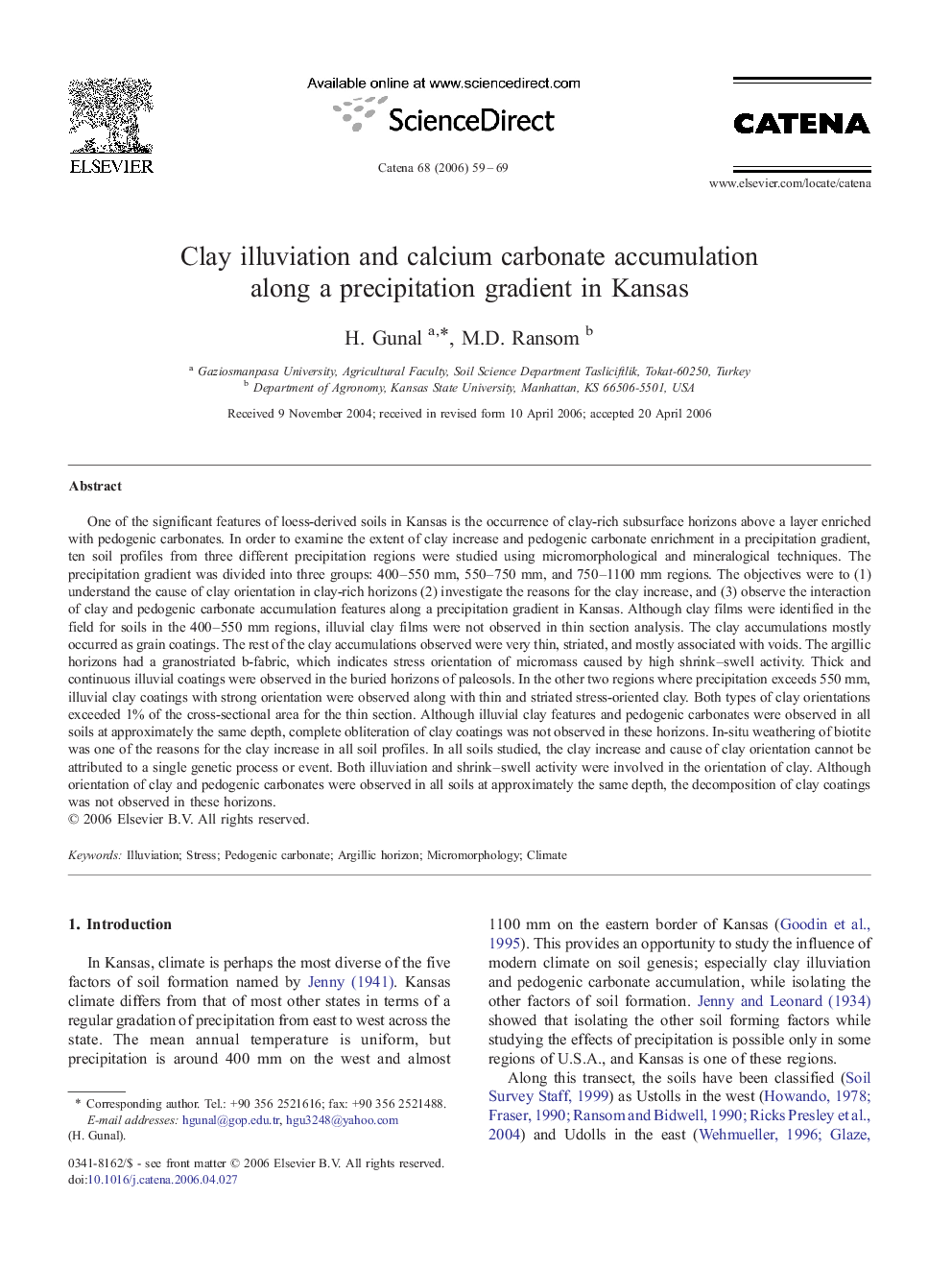| کد مقاله | کد نشریه | سال انتشار | مقاله انگلیسی | نسخه تمام متن |
|---|---|---|---|---|
| 4572771 | 1332199 | 2006 | 11 صفحه PDF | دانلود رایگان |

One of the significant features of loess-derived soils in Kansas is the occurrence of clay-rich subsurface horizons above a layer enriched with pedogenic carbonates. In order to examine the extent of clay increase and pedogenic carbonate enrichment in a precipitation gradient, ten soil profiles from three different precipitation regions were studied using micromorphological and mineralogical techniques. The precipitation gradient was divided into three groups: 400–550 mm, 550–750 mm, and 750–1100 mm regions. The objectives were to (1) understand the cause of clay orientation in clay-rich horizons (2) investigate the reasons for the clay increase, and (3) observe the interaction of clay and pedogenic carbonate accumulation features along a precipitation gradient in Kansas. Although clay films were identified in the field for soils in the 400–550 mm regions, illuvial clay films were not observed in thin section analysis. The clay accumulations mostly occurred as grain coatings. The rest of the clay accumulations observed were very thin, striated, and mostly associated with voids. The argillic horizons had a granostriated b-fabric, which indicates stress orientation of micromass caused by high shrink–swell activity. Thick and continuous illuvial coatings were observed in the buried horizons of paleosols. In the other two regions where precipitation exceeds 550 mm, illuvial clay coatings with strong orientation were observed along with thin and striated stress-oriented clay. Both types of clay orientations exceeded 1% of the cross-sectional area for the thin section. Although illuvial clay features and pedogenic carbonates were observed in all soils at approximately the same depth, complete obliteration of clay coatings was not observed in these horizons. In-situ weathering of biotite was one of the reasons for the clay increase in all soil profiles. In all soils studied, the clay increase and cause of clay orientation cannot be attributed to a single genetic process or event. Both illuviation and shrink–swell activity were involved in the orientation of clay. Although orientation of clay and pedogenic carbonates were observed in all soils at approximately the same depth, the decomposition of clay coatings was not observed in these horizons.
Journal: CATENA - Volume 68, Issue 1, 15 December 2006, Pages 59–69